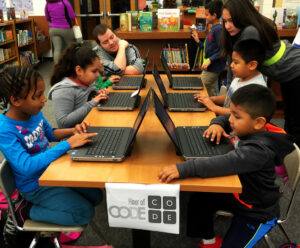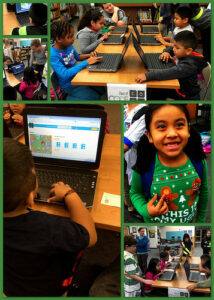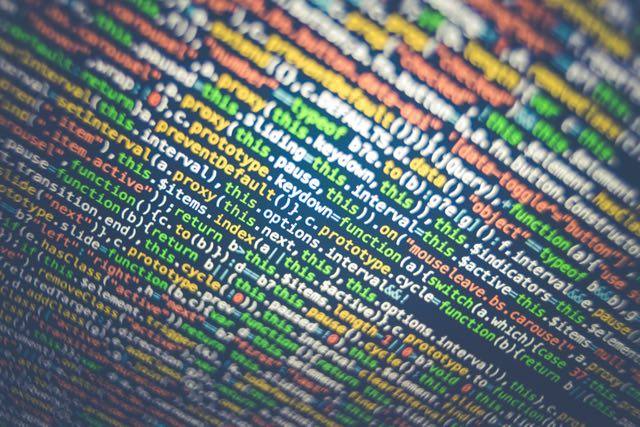The Hour of Code started as a one-hour introduction to computer science to demonstrate that anyone can learn the basics of coding. The effort was also designed to demystify computer coding and to broaden participation in the field of computer science. The official Hour of Code takes place each year during Computer Science Education Week. The 2017 Computer Science Education Week will be December 4-10, but for all practical purposes, you can host an Hour of Code all year round.
Organizing an Hour of Code event at your school or in your community is easy. Their website provides step-by-step instructions on how to pull off the event, complete with activities your participants can use to learn to code in an hour. They also provide ideas to get your community involved and a FAQ page that will answer almost every question you have about hosting an Hour of Code.
To assist you in your efforts, I reached out to several school districts who have participated in the event in the past to discover the best practices to follow when hosting an Hour of Code.
Strategies to Increase Participation

Photo courtesy of K.W. Barrett via Flickr.
Spring Branch ISD sends emails to district and campus leadership, posts planned Hour of Code activities on their website, and encourages community members to be “code buddies” with their students. They also use the #SBHourofCode hashtag to promote their efforts. To create some extra excitement, Karen Justl of SBISD, dresses up during the week as a Storm Trooper and visits several sites handing out stickers. How cool is that?!
Seguin ISD incorporates coding activities into all of their elementary and middle school technology application classes. And while students engage in coding lessons all year, there is a special emphasis during Computer Science Education Week.
Strategies to Involve the Community
Randy Rogers, Director of Digital Learning Services at Seguin ISD, invites numerous district and community leaders to come to campuses and participate in coding activities with their students. To facilitate this, elementary campuses submit a schedule of times that visitors can join students, and the dignitaries are assigned to various schools based upon their availability. In the past two years, SISD has had their state representative, mayor, city council members, county judge, chamber of commerce president, school board members, and more participate in an Hour of Code with one of Seguin’s students. What a great way to educate your elected officials about the need for more computer science!
How the Hour of Code Highlights Your District

Photo courtesy of K.W. Barrett via Flickr.
Spring Branch ISD includes pictures and stories about their Hour of Code activities on their district’s blog. Seguin sees the Hour of Code as an opportunity to have community members see and experience what their students are learning and a valuable opportunity to build relationships within the community. Rogers made clear the value he places in the Hour of Code when he said, “Our students are our best advertisement, and the interactions as our kids teach our community leaders how to use Scratch or Code Combat or Code.org is priceless!”
Computer science is foundational. It is changing every industry, which means every student should have the opportunity to learn how to create technology, not just use it. Participating in the Hour of Code will enable your students to experience the fun of creating a simple computer program and possibly encourage them to want to learn more. The sky is the limit!

